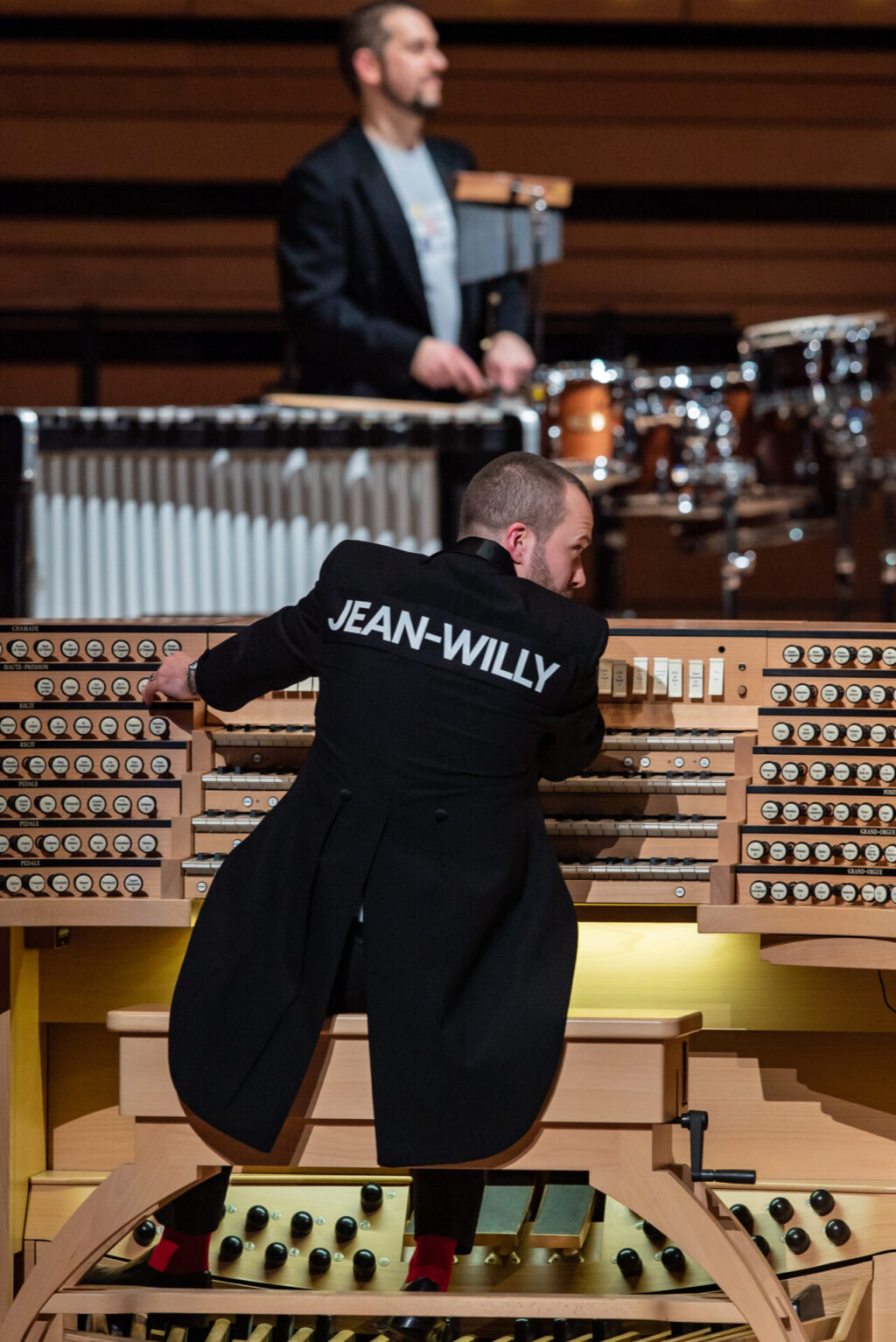Interview with Jean-Willy Kunz, OSM organist-in-residence

- What would happen if helium were projected into the organ pipes?
I don’t know. But that’s a great question.
- How do organists who are afraid of heights handle playing at the MS?
We haven’t yet had a serious case of acrophobia at the Maison symphonique, but it’s worth noting that the altitude of the console is a lot less frightening than it appears. Especially if we compare it with the Gesù, where behind the organist is a 20-metre drop!
- What is the lifespan of an instrument like the GOPB?
The oldest organ in the world is located in Sion, Switzerland, and has been operational for nearly 600 years! It’s therefore reasonable to believe the Grand Orgue Pierre-Béique will enjoy a lifespan of several centuries, especially given its controlled environment. If well-maintained and tuned on a regular basis, I predict it will last longer than the Olympic Stadium.
- How many of the GOPB’s pipes can be sounded at the same time?
The organ has a coupling system that allows someone to play notes on the 1st keyboard only, and have them played from the 2nd, 3rd, and 4th keyboards at the same time. So, if I simultaneously press all 61 keys of the 1st keyboard—coupled with the others—it would have to be with my forearms, and then if someone else lies down across all 32 notes on the pedal board, then technically, yes, it’s possible to sound all 6489 pipes of the organ at the same time, which would produce a sound of approximately 100 decibels, ranging from 15 hertz to 11,500 hertz. It wouldn’t necessarily be all too lovely…
- What is the most unusual genre of music you have every played or heard at the organ?
Jazz.
- Can all pieces written for piano be played on the organ?
Not all of them can be played in their original versions, mainly because a piano has a 88-key span, while the organ at the Maison symphonique has a 61-key span (some organs have even fewer). While similar to piano technique, organ technique has some important differences. For example, if you hold your finger down on one key of the organ, the sound can go on and on; but on a piano, the sound will only last a few seconds. Pianists, organists, and harpsichordists each have different playing techniques.
- In dilapidated churches, do organ pipes make good mouse dens?
Yes: mice, bats, and pigeons have all made happy homes in old church organs. Fortunately, we are not likely to stumble on one of those creatures at the Maison symphonique.
- How does someone practise the organ at home?
They do as I do, on an electronic organ! These are a bit bigger than an upright piano, so they’re easy enough to keep at home. It’s still essential for organists to practise on a real instrument, so many depend on access to churches for this. Nothing can replace the sensation of wind entering the pipes. For those who have the means, chamber organs are also an option, like the one at Bourgie Hall before it was gifted to the Museum of Fine Arts, and the one in the offices of the Canadian International Organ Competition. These instruments generally have 200 to 500 pipes.
- Where is the biggest organ in the world?
The Boardwalk Hall Auditorium Organ, in Atlantic City, installed in a hall that seats 17,000 people. The organ was inaugurated in 1932 and has more than 33,000 pipes, 7 keyboards, 449 ranks, and 1235 stops.